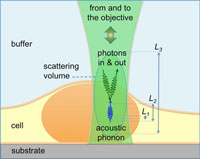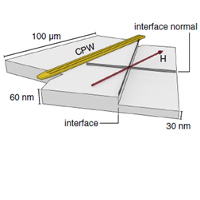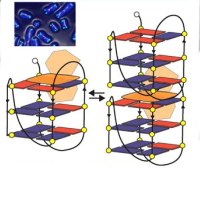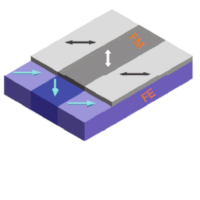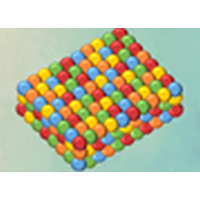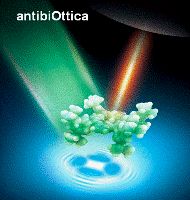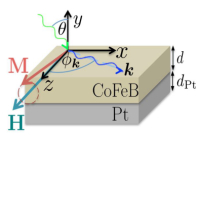PhD Grants and Thesis
At the IOM labs and facilities you can find many opportunities, research areas and qualifying research subjects for your PhD thesis.
Open position for PhD in Nanotechnology
in the frame of H2020 Marie Curie Actions- Innovative Training Network
INDEED
Innovative Nanowire DEvicE Design
Growth of ordered NW arrays containing magnetic inserts
Semiconductor nanowires (NWs) exhibit unique properties that make them potential building blocks for the next generation of nanoelectronics devices. Direct integration of NWs into devices, where NW ensembles are employed “as-grown” on their substrate, relies however on the availability of ordered arrays of identical nanowires.
The PhD research project will focus on the growth of ordered arrays of identical III-As NWS, with special interest to NW heterostructures incorporating 0-dimensional and 1-dimensional diluted magnetic semiconductors (DMS). The activity will involve the preparation of patterned substrate by nanofabrication techniques, the growth of the nanowires by metal assisted molecular beam epitaxy (MBE), and their morphological characterisation by scanning electron microscopy.
The activity will take place at IOM, exploiting the existing multi-chamber ultra high vacuum (UHV) system composed by two MBE growth chamber, a metallisation chamber and an analysis chamber for x-ray photoemission spectroscopy, and the fully equipped nanofabrication laboratory. The research project will be developed in close collaboration with the IMM-CNR laboratory, also a member of INDEED, where the nanowires optical properties will be investigated by time resolved spectroscopy.
for more information and eligibility criteria:
https://euraxess.ec.europa.eu/jobs/184545
contact: Silvia Rubini - [ e-mail ]
In 2016 IOM confunds some PhD fellowship at the Graduate School of Nanotechnology in Trieste (XXXII cycle):
- within the ANCHOR-SUNDYN collaboration, Supervisors: prof. Alberto Morgante, dr. Albano Cossaro.
The title of the thesis is "Self Assembly and Anchoring of Organic Molecules on Surfaces and on 2D Materials". The first part of the project (6-8 months) will be dedicated to the set-up of the experiment and to the test of the pump and probe spectroscopy technique. The procedure will be then applied to the systems of interest (thin film of pi-conjugated organic molecules deposited on substrates with different reactivity). The results will be combined with those obtained with other experimental techniques (Resonant Photoemission Spectroscopy, Ultra Violet Photoemission, STM Imaging) in order to obtain a complete description of the electronic and structural properties of the systems. The project aims at describing the molecule-substrate interaction in terms of the electronic transport at the organo-metallic interface.
- Presso i Laboratori CNR-IOM and Elettra- Sincrotrone Trieste, Supervisori: prof. Giovanna Fronzoni, dr. Marcello Coreno
Titolo: “Studio dell'evoluzione temporale ultraveloce di stati elettronici in materiali nanostrutturati e nei loro precursori con luce di sincrotrone e FEL”.
Lo studio delle proprietà ottiche, magnetiche ed elettroniche di molecole e cluster riveste particolare interesse per la comprensione delle proprietà chimico-fisiche dei sistemi macroscopici in fase condensata, dal punto di vista sia delle scienze fondamentali che applicative. L’obiettivo scientifico del progetto di dottorato si colloca nell’ambito della ricerca sulla trasformazione di energia luminosa in energia elettrica o chimica (fotocatalisi ed energetica). A tal proposito verrà affrontato lo studio delle proprietà elettroniche di specie isolate di complessità crescente, costituite da molecole organiche di natura aromatica e da loro complessi con metalli, per arrivare fino a sistemi di addotto tra cluster inorganici e molecole organiche, modello delle interfacce tra substrati organici e superfici metalliche alla base del funzionamento di dispositivi optoelettronici nanostrutturati. Per quanto riguarda lo studio dell'attività catalitica di molecole e cluster, il confronto tra gli spettri di fotoemissione di sistemi liberi in fase gassosa ed adsorbite su cluster e/o su superfici potrà fornire fondamentali informazioni su magnitudine e natura delle forze intermolecolari che regolano i processi di interazione tra le molecole ed i cluster in esame. L'analisi dei dati spettrali si avvarrà di metodi quantochimici allo stato dell'arte, in stretta collaborazione con il gruppo di Chimica Teorica dell'Università di Trieste. Verranno utilizzate tecniche spettroscopiche da radiazione di sincrotrone e laser, dalla cui combinazione in schemi pump-probe si intende avere accesso alo studio dell'evoluzione temporale di processi elementari. Lo studio sperimentale si avvarrà dell’utilizzo sia di spettroscopie di fotoemissione e fotoionizzazione con radiazione di sincrotrone, in maniera prevalente presso le linee di luce CNR ad Elettra, Gas Phase Photoemission (GasPhase), Circular Polarization (CiPo) e Advanced Line for Overlayer, Interface and Surface Analysis (ALOISA). Ma si avvarra' anche di sorgenti di luce innovative (laser HHG e FEL) per lo studio della dinamica temporale dei processi di rilassamento elettronico mediante tecniche di pump-probe. Si amplierà così dalla semplice misura della vita media di stati elettronici eccitati, ad un'indagine più accurata dei meccanismi di trasferimento di energia e di carica all'interno di molecole e aggregati molecolari.
-
At the laboratories: CNR-IOM, Fermi Free-Electron Laser, Elettra, and within the projects EUROFEL, NFFA_Europe, JRA4
Supervisore: dr. Maddalena Pedio
The aim of this PhD thesis is to combine the synthesis of selected novel nanostructured materials (such as molecular semiconductors thin films and/or metallic nanoparticle architectures) with pump-probe experiments of the photoinduced transient states and the related electronic relaxation and structural deformations at different time scales, from femtosecond fs to nanosecond ns. Moreover we aim to model the pump-probe signal and to develop new tools in order to understand the time resolved experiments performed at synchrotron and advanced pulsed sources.
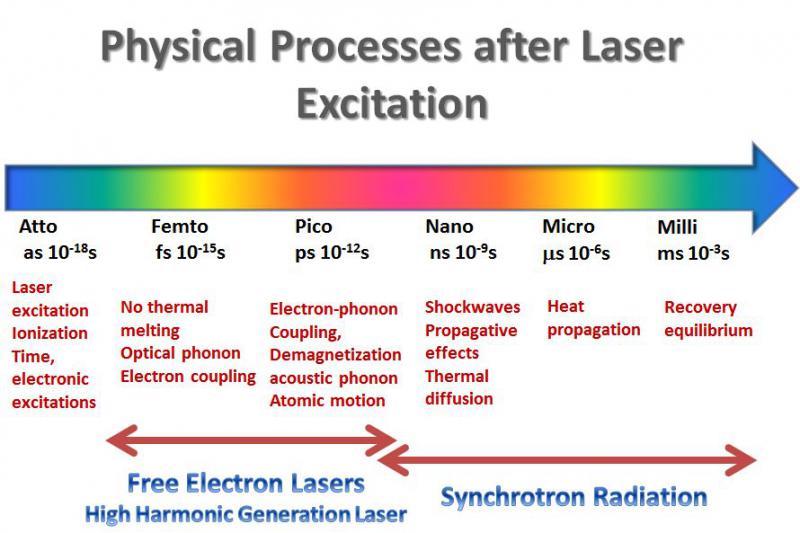
In solids the photoinduced dynamics follow a complex pathway from the femtosecond to the microsecond in the nanometer scale, through a sequence of processes. [1] New pulsed radiation sources such as Free Electron Laser and High Harmonic Generation Laser, provide state of the art time-resolved techniques (Photoemission, X-ray absorption, Diffraction etc) allowing the direct study of matter dynamical transient states. Pump-probe spectroscopies have being applied to study photoinduced phase transition, ultrafast demagnetization processes or coherent phonon generation mechanisms[2].The static and dynamic multitechniques characterization at different time scales is mandatory for the comprehension of such complex processes, as well as correlation among structural, opto-magnetic and electronic properties.The IOM (CNR) laboratory of Trieste provides a large offer of techniques for the complete characterization of the nanostructured systems, and in particular combined photoemission-Inverse photoemission, X-Ray absorption, Diffraction, Raman spectroscopies, and SEM, STM-AFM microscopies. The proponent group has longstanding experience in material and surface science and is active in pump-probe techniques also with collaborations with facilities and instruments dedicated to fast and ultrafast spectroscopies. A new instrument for time resolved X-ray absorption [3] is in progress within the NFFA European and the Eurofel Programmes and its use will be part of this thesis.
The position offers vast opportunities for collaborations with the Fermi FEL groups, and with various EU research groups within the consortium of the “time resolved working group” of the NFFA RIA programme.
[1] Nasu, K. (2004). Photoinduced Phase Transitions. World Scientific Publishing Co. Pte. Ltd. ISBN 981-238-763-3
[2] see for example R. Bertoni et al. Nature Materials (2016) doi: 10.1038/nmat4606; E. Collet et al , Science 300, 612 (2003); von Korff Schmising et al., Physical Review Letters 112, 217203 (2014); H. Öström et al. Science 347, 978-982 (2015).
[3] L. Stebel et al Review of Scientific Instruments 82, 123109 (2011)
For PhD fellowships in italian Universities you can check here

